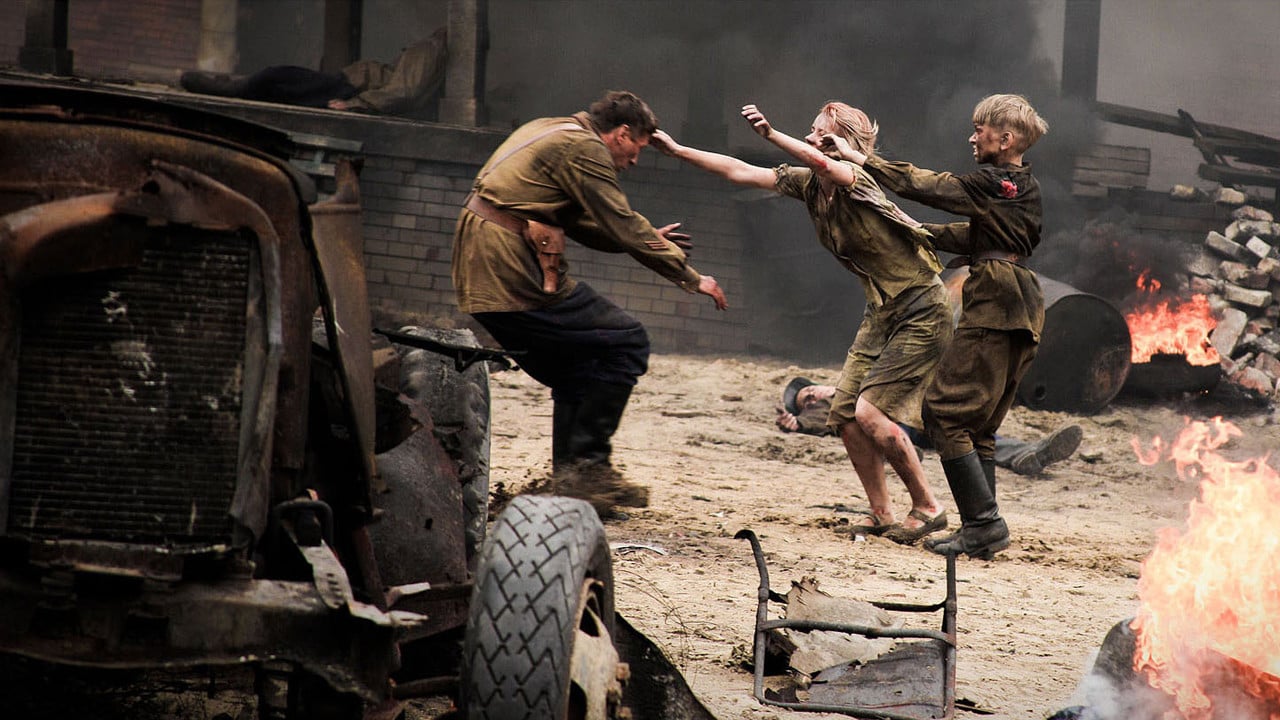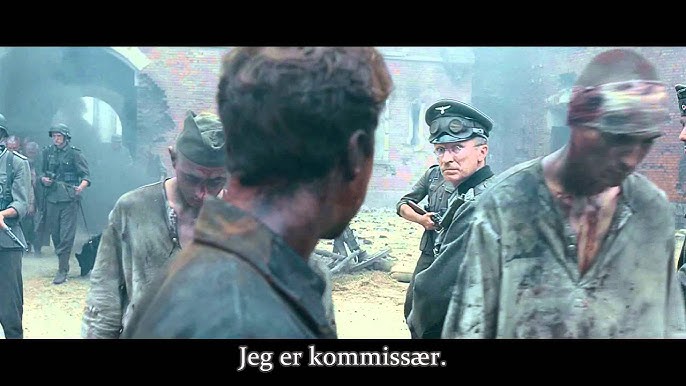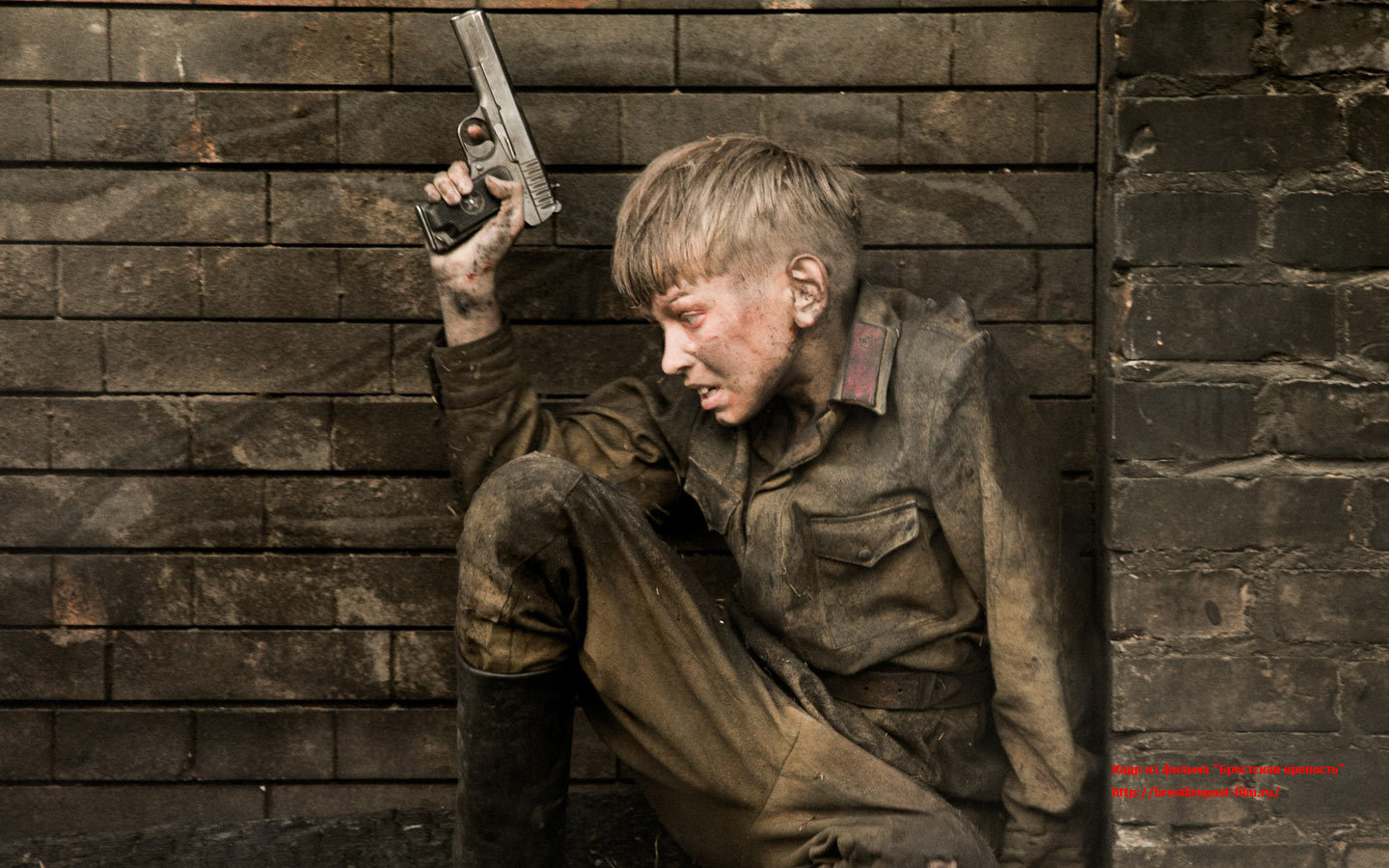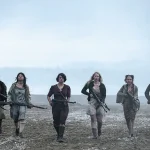🎬 Fortress of War (2010)

Fortress of War (2010) Movie Review: A Gripping Tale of Heroism and Defiance in WWII
Introduction: A Raw Portrayal of War and Resistance
Fortress of War (2010), directed by Alexander Kott, is a powerful Russian war drama based on the real-life events of the defense of the Brest Fortress during World War II. Set in the summer of 1941, the film depicts the heroic and tragic struggle of Soviet soldiers and civilians who defied overwhelming odds to resist the Nazi invasion of the Soviet Union. With its intense action sequences, emotional depth, and historical accuracy, Fortress of War offers a sobering yet inspiring account of the human spirit’s resilience in the face of unimaginable hardship.
The film focuses on the harrowing siege of the Brest Fortress, one of the first and most significant battles of the Great Patriotic War. The defense of the fortress, which lasted for several weeks, became a symbol of Soviet resistance and heroism. Through its portrayal of courage, sacrifice, and the brutal realities of war, Fortress of War offers a deeply moving tribute to the soldiers and civilians who fought to protect their homeland from the Nazi invaders.
Plot Summary: The Siege of Brest Fortress
The story of Fortress of War is set against the backdrop of the early days of World War II. In June 1941, the Nazi forces launched Operation Barbarossa, an invasion of the Soviet Union that quickly overwhelmed Soviet defenses. One of the key points of resistance was the Brest Fortress, located on the western border of the Soviet Union in Belarus. The fortress, a massive military stronghold, was initially believed to be an impregnable fortress, but it soon became the site of a fierce and protracted battle as Nazi forces attempted to seize it.
The film follows a group of Soviet soldiers, led by Major Pyotr Gavrilov (Andrei Merzlikin), who are stationed at the fortress when the Nazis launch their assault. The soldiers, along with civilians who are trapped in the fortress, must fight for their lives as the Nazi forces unleash a devastating attack. The battle quickly turns into a desperate defense, with the Soviet soldiers holding out against overwhelming odds.
As the siege progresses, the defenders of the fortress, including young soldiers, women, and children, demonstrate remarkable courage and resilience. The soldiers fight not only against the Nazis but also the harsh conditions of war, including limited resources, dwindling ammunition, and the constant threat of death. Despite the overwhelming force of the enemy, the defenders of Brest Fortress refuse to surrender, embodying the spirit of resistance and sacrifice.
The film explores the emotional and psychological toll of war on both the soldiers and civilians, depicting the brutal realities of combat, loss, and survival. The defense of the fortress becomes a symbol of Soviet strength and determination, with each day of resistance adding to the legend of the fortress as a bastion of heroism in the face of tyranny.
The Performances: Raw and Emotional Portrayals of Courage
The performances in Fortress of War are one of the film’s standout features, with the actors delivering raw and emotional portrayals of the soldiers and civilians caught in the siege. Andrei Merzlikin, who plays Major Pyotr Gavrilov, delivers a compelling performance as the leader of the defense. His portrayal of Gavrilov is both stoic and vulnerable, capturing the weight of responsibility that comes with commanding the defense of such an important stronghold. Merzlikin’s performance highlights the inner conflict of a leader who must balance the need for tactical decisions with the emotional burden of seeing his men and civilians suffer.
The supporting cast, including Anatoly Bely, Aleksandr Ustyugov, and Irina Rozanova, also deliver strong performances, bringing depth and humanity to their respective roles. The film’s emphasis on the collective effort of the defenders of the fortress means that each character has a unique perspective on the battle, and the actors effectively convey the psychological strain and physical toll that the siege takes on them.
In particular, the film gives significant attention to the experiences of the civilians caught in the fortress, including women and children who become an integral part of the defense. These characters are not mere background figures but play active roles in the fight, adding emotional weight to the film’s portrayal of the siege. The performances of these actors are heart-wrenching, as they highlight the personal sacrifices made by ordinary people during wartime.
The film’s ensemble cast works together seamlessly, creating a sense of unity and shared purpose among the defenders. This sense of camaraderie is central to the film’s emotional impact, as it shows how people from all walks of life can come together in the face of overwhelming adversity.
Cinematography and Visuals: A Brutal, Immersive Depiction of War
The cinematography in Fortress of War is intense and immersive, effectively conveying the brutality of war and the harrowing conditions of the siege. The film uses tight, close-up shots during battle scenes to place the viewer in the midst of the action, creating a sense of chaos and urgency. The camera often focuses on the faces of the soldiers and civilians, capturing their fear, determination, and anguish as they fight for survival.
The film also makes use of wide shots to showcase the scale of the battle and the desolation of the surrounding landscape. The barren, war-torn environment surrounding the fortress reflects the bleakness of the soldiers’ situation, with little hope for escape or rescue. The cold, muted color palette further emphasizes the harshness of the setting, contributing to the film’s grim tone.
The battle sequences are expertly choreographed, with the camera shifting between the perspectives of different characters to highlight the personal nature of the conflict. The violence of war is depicted in a raw, unflinching manner, showing the devastating impact of the battle on both the soldiers and the civilians caught in the crossfire. The destruction of the fortress is portrayed with an overwhelming sense of scale, as the Nazi forces unleash relentless firepower on the defenders.
The film’s cinematography helps to create a visceral experience for the audience, making the horrors of war feel immediate and tangible. The cinematographic choices are an essential part of the film’s ability to convey the emotional and physical toll of the siege on those who endured it.
Historical Accuracy: A Tribute to the Defenders of Brest Fortress
Fortress of War is based on the true events surrounding the defense of the Brest Fortress in 1941, one of the earliest and most significant battles of the Nazi invasion of the Soviet Union. The defense of the fortress, which lasted for several weeks, became a symbol of Soviet resistance and resilience. Despite being surrounded by a massive Nazi force and facing near-impossible odds, the defenders of the fortress refused to surrender and fought to the death, buying valuable time for the Soviet army to regroup and mount a counteroffensive.
The film remains largely faithful to the historical events, depicting the siege in a realistic and respectful manner. The portrayal of the fortress’s defenders as ordinary soldiers, women, and children who heroically resisted the Nazis is both historically accurate and emotionally powerful. The film also highlights the strategic importance of Brest Fortress, which served as a critical point of defense in the early stages of the war.
While the film takes some dramatic liberties to enhance the emotional impact of the story, it remains grounded in the historical context of the battle, providing a vivid and authentic portrayal of the events. The inclusion of personal stories and the human cost of war helps to bring the history to life, making the events of the siege feel immediate and relevant.
Themes: Sacrifice, Resistance, and the Cost of War
At its core, Fortress of War is a film about sacrifice and resistance. The defenders of Brest Fortress, including soldiers and civilians, demonstrate remarkable bravery and selflessness as they fight to protect their homeland from the Nazi invaders. The film explores the personal sacrifices made by these individuals, as they put their lives on the line to resist a seemingly unstoppable enemy. The sense of unity and shared purpose among the defenders is a central theme, highlighting the power of collective action in the face of overwhelming adversity.
The film also explores the psychological and emotional toll of war, particularly on those who are forced to endure such extreme conditions. The soldiers and civilians of the fortress face not only the physical dangers of the battle but also the emotional burden of witnessing death, destruction, and suffering. The film’s portrayal of the human cost of war is poignant and thought-provoking, reminding the audience of the price of freedom and the sacrifices made by those who fought for it.
The theme of resistance is also central to the film, as the defenders of the fortress refuse to surrender, even when it seems like all hope is lost. Their unwavering determination becomes a symbol of Soviet strength and resolve, and their defiance in the face of overwhelming odds is a testament to the resilience of the human spirit.
Conclusion: A Harrowing and Heroic War Film
Fortress of War (2010) is a gripping and emotionally powerful war film that offers a raw, authentic portrayal of the defense of Brest Fortress during World War II. With its strong performances, intense cinematography, and historical accuracy, the film captures the heroism, sacrifice, and resilience of the soldiers and civilians who fought to defend their homeland from the Nazi invaders.
The film’s emphasis on the personal stories of the defenders of the fortress makes it an emotionally resonant and impactful experience, showing the true cost of war and the unbreakable spirit of resistance. Fortress of War is a must-watch for fans of war films and historical dramas, offering a sobering and inspiring tribute to the courage and determination of those who fought for freedom.










